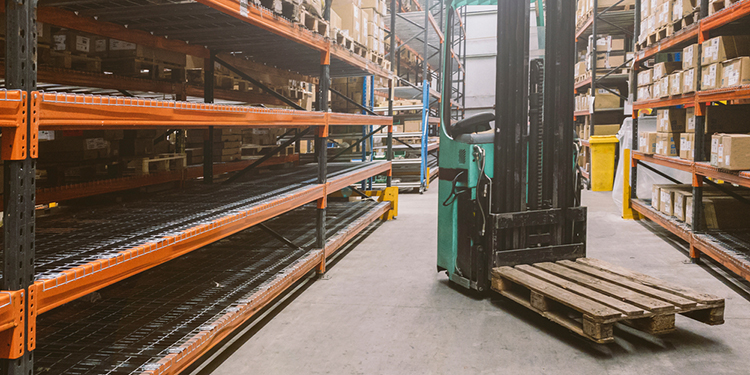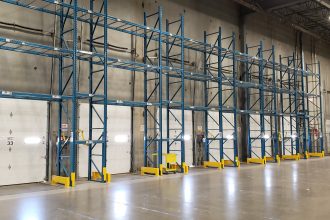Wire Rack Decking Safety 101

Placed on pallet rack beams, rack decking spans the distance between them. The decking, fabricated from welded wire mesh with a support structure of reinforcing channels (or support wires), provides added support to items stored on a pallet. It also prevents loose items from falling through the racking and potentially striking personnel on the floor below. Further, wire decking can help guide forklift operators as they align a pallet into its storage position prior to lowering it onto the rack beams.
To ensure its safe use, it’s important that rack owners only use welded wire rack decking specifically engineered for a given application in accordance with RMI’s ANSI MH26.2: Design, Fabrication, Testing and Utilization of Welded Wire Rack Decking. The specification states that a buyer must submit the dimensional information and load capacity rating of the rack to the wire deck manufacturer prior to design and production. Because the load calculations for wire decking are different than those used to design and engineer a storage rack structure, sharing that information ensures that the decking will fit the system, and that the deck capacity matches the application.
Three types of welded wire rack decking are most commonly offered. They include:
- Decking with a waterfall edge that overlaps the outer edge of the beams
- Decking designed with an instep that fits inside a step-ledge in the beams
- Decking with a straight, non-waterfall edge that spans the distance of the beams
In addition to only using wire decking that has been engineered and manufactured to match a specific racking application, there are several other best practices recommended by the members of RMI to ensure the safety and integrity of the accessory. Among them:
- Always distribute a static load evenly across decking. These uniformly distributed loads cover the entire surface of the rack decking, independent of the pallet rack beams, to prevent a concentration of weight — known as a point load. Unless the decking has been engineered to accommodate a concentrated point load, it could bow, buckle, sag or otherwise fail, ultimately increasing the risk of the load falling.
- Always secure decking with fasteners recommended by the manufacturer. To prevent the decking from slipping side-to-side or falling off the beams while product is being placed or removed, self-tapping screws or other fasteners should be used to secure each panel placed in the rack. Doing so also prevents beam spread.
- Never walk on wire decking. Wire decking is not engineered or constructed to be stood upon or walked across; it should never be used for anything other than uniformly distributed load storage. If the decking is intended for use in a hand stacking or point loading application, a wire deck manufacturer can help design a deck to accommodate that specific use.
Looking for more information about the safe design and use of welded wire rack decking? Purchase the RMI’s ANSI MH26.2: Design, Fabrication, Testing and Utilization of Welded Wire Rack Decking specification.


